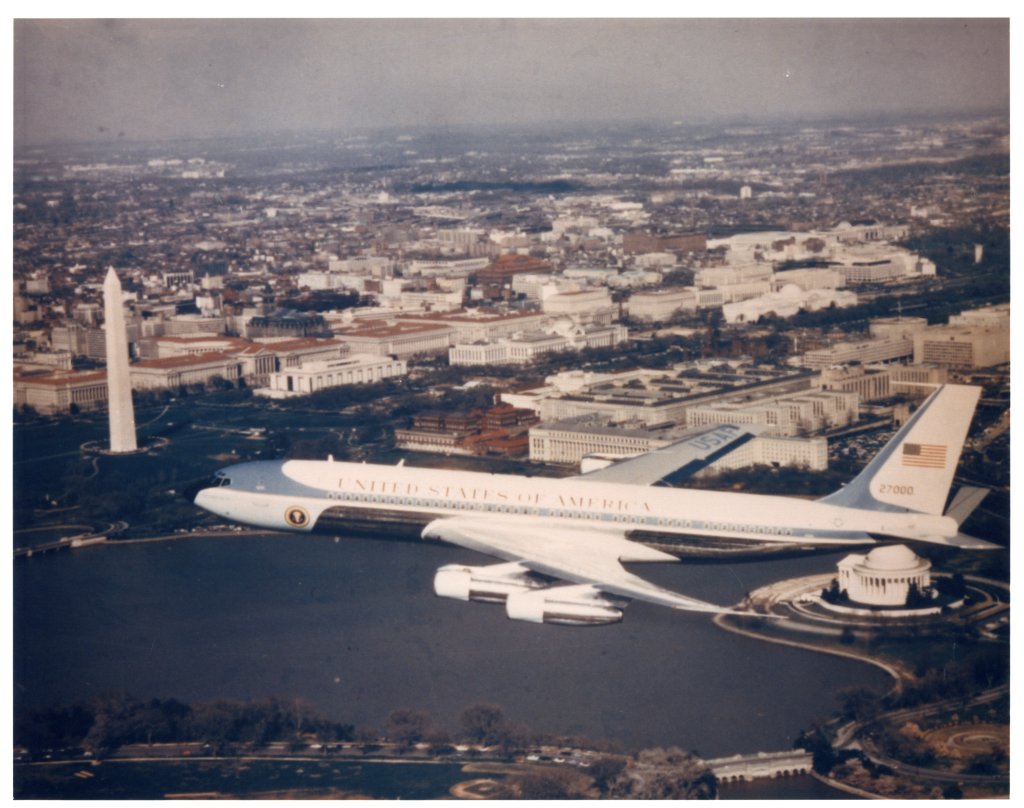In the 21st century, the Boeing VC-25 based on the Boeing 747 is what comes to mind when people think of Air Force One. The Presidential aircraft was famously depicted in the 1997 Harrison Ford film Air Force One and other media. Although the VC-25 flew its maiden flight in 1987 and was introduced three years later, it did not completely replace the older VC-137 derived from the Boeing 707. In fact, the VC-137 flew its last mission as Air Force One just under two weeks before the terror attacks on September 11, 2001.

President George H. W. Bush was the last president to use the VC-137 as his primary means of air travel. The introduction of the two VC-25s was delayed by problems with the aircraft’s communication systems. When the VC-25s replaced the VC-137s in 1990, the older aircraft remained on standby as a backup. The VC-137s, designated Special Air Mission 26000 and 27000, were kept on standby as backup planes to the new SAM 28000 and 29000. In fact, despite the introduction of the VC-25, SAM 27000 still flew Presidents Bill Clinton and George W. Bush as Air Force One.

On August 29, 2001, SAM 27000 flew President Bush and First Lady Laura Bush to Texas State Technical College Waco Airport; the two were en route to Prairie Chapel Ranch, also known as the Bush Ranch. At the airport, President Bush commented on SAM 27000’s history and legacy. “This plane, tail number 27000, wore the name of Air Force One for 444 missions, and more than 1 million miles. Today this plane carried a President for the last time, and soon it will be taking its last flight,” he said. “…it will take its final flight westward into history.” SAM 27000 was flown to California where it was put on display at the Ronald Reagan Presidential Library in Simi Valley.

After his last flight aboard SAM 27000, President Bush flew exclusively aboard the VC-25s. However, the aircraft was still relatively new and still had bugs to work out. This was made abundantly clear 13 days later on September 11. When news of the attacks on the Twin Towers reached President Bush in Florida at 9:05AM, his Secret Service team began evaluating options to keep the President safe. Naturally, the most secure place to be was in the sky aboard VC-25 SAM 29000 and Air Force One took off at 9:55AM.

Aboard the only plane in the sky, with all U.S. airspace shut down before Air Force One took off, President Bush and his staff gathered information and worked to address the crisis. However, coordination was complicated by communications issues aboard SAM 29000. President Bush struggled to contact his family and Vice President Dick Cheney and reports reaching the President’s staff were misunderstood. One such report noted that “Angel” was a target. The use of this code word for Air Force One indicated to staffers aboard the aircraft that the attackers were highly sophisticated and perhaps had someone within the President’s inner circle. In actuality, the reference to Air Force One as “Angel” was made by someone within the intelligence community and the report simply identified Air Force One as a potential target.

Perhaps the most glaring issue aboard SAM 29000 was the President’s inability to address the nation in the air. Instead, Air Force One had to land at Barksdale Air Force Base, Louisiana at 11:45AM. From there, President Bush made his first remarks to the American people following the attacks. After 9/11, the VC-25s were retrofitted to allow the President to make such an address from the “Oval Office aboard Air Force One.” Additionally, President Bush could not communicate with military leaders from aboard Air Force One. So, SAM 29000 landed at Offutt Air Force Base, Nebraska at 3:00PM. From a STRATCOM bunker capable of withstanding a nuclear blast, the President was finally able to have a video teleconference with military leaders. Today, SAM 28000 and 29000 enable the President to have VTCs while airborne.


